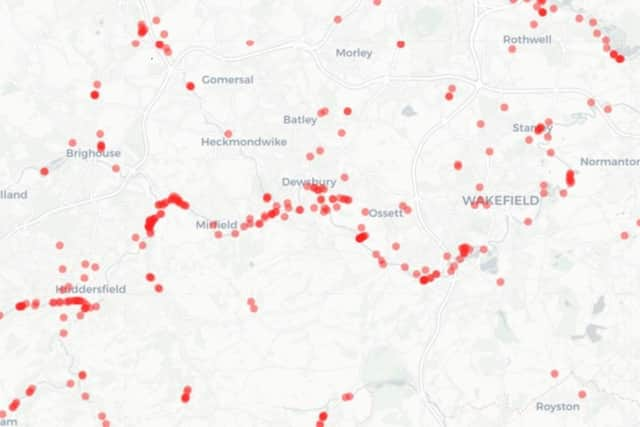Japanese knotweed: Map reveals live cases in Batley, Heckmondwike, Dewsbury and Mirfield
and live on Freeview channel 276
In the last five years, West Yorkshire has been victim to 1,762 cases reported, making it the region with the most cases out of the 10 regions displayed on the site.
The map shows that 29,536 cases have been reported UK-wide, however the publication states: “Based on our analysis of NBN Atlas data, there are a further 19,702 unconfirmed cases of Japanese knotweed, with thousands more in the UK likely to remain unreported.”
Advertisement
Hide AdAdvertisement
Hide AdDescribed by the Royal Horticultural Society as an invasive non-native species, Japanese knotweed was introduced to the UK around 1850 intended as an ornamental garden plant. Its potential to exceed heights of seven ft and to grow in almost any soil condition means it has the propensity to wreak havoc on buildings, roads and other man-made infrastructure.


The perennial weed will die back down to the ground in winter, but in the height of summer its canes, characterised by purple flecks, can grow over 2.1m tall and grow shovel-shaped leaves.
The map uses biological record centres as its sources of information. It is crucial to note that the live cases – marked by a red dot – indicate reports within 10km of that area, and should not be taken as a precise location marker. The map does, however, give an overview of Japanese knotweed locality.
The extensiveness of the weed has been problematic in the UK to such a degree that limiting its spread is now laid out in law. According to the Royal Horticultural Society, under Schedule 9 of the Wildlife and Countryside Act 1981, it is also an offence to cause Japanese knotweed to grow in the wild. The plant is even included under Anti-social Behaviour, Crime and Policing Act 2014 regarding controlling the weed on your property. Not only this, but it is important to be aware if the pernicious weed is on your property for legal reasons – homeowners looking to sell have a duty since 2013 to check if the weed grows in their garden.
You can identify the plant using the Non-native Species Secretariat website.
Further information can also be found on the GOV.UK website.